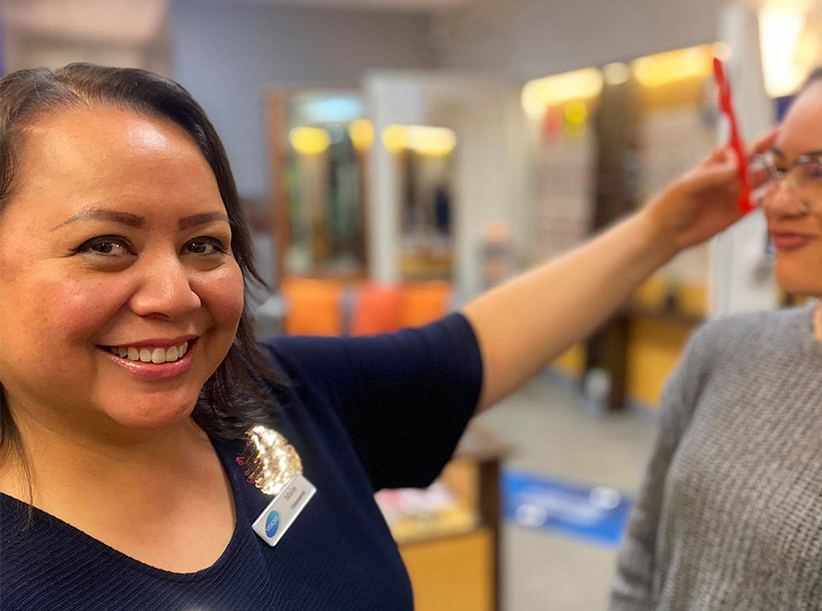The Future of Eye Care

Introduction
The eye care industry is evolving at a rapid pace. With the global population aging and age-related eye conditions on the rise, the increased demand for advanced eye care solutions is being met with exciting innovations in optometry services and technology. If you’re curious about the changing face of the optometry industry, read on. In this blog, we’ll dive into some frequently asked questions around the future of eye care, and the evolving role of optometrists in this dynamic industry.
What is the future of eye care?
1.1 billion people around the world were living with vision loss in 2020, a figure forecasted to reach close to 1.7 billion by 2050. With research indicating 80-85 percent of our perception, learning, cognition and activities are regulated by our vision, the importance of maintaining global eye health is undeniable, as is the need for continued innovation in optometry to ensure access to cutting-edge eye care is maximised.
Artificial intelligence, gene therapy and telemedicine are all expected to usher in personalised eye care solutions that improve upon what is available today. Innovations in wearable technology are also promising, with virtual reality vision therapy, 3D-printed eyewear and wearable devices for vision monitoring all set to serve as additional tools to traditional eye care services and provide patients with greater levels of care.
Are eye problems increasing?
The global population has experienced staggering growth over the past century. As technology has advanced at a similar pace, life expectancy has increased, leading to an aging population with substantial health care requirements. Many of these are eye related, from conditions like cataracts and dry eye, to macular degeneration and glaucoma. Increased screen time has influenced the increasing prevalence of myopia, or short-sightedness, a condition projected to impact 50% of the world’s population by 2050. With statistics like these in mind, it’s safe to say eye problems are increasing, necessitating ongoing innovation and investment in the eye care industry.
Balancing this however, is the incredible advancement in eye care technology, available treatments, and increased awareness about eye health. Eye health has improved in many regions as a consequence and ongoing innovation will continue this trend.
Do optometrists have a future?
Optometrists will definitely play a vital role in the future of eye care. While technology provides useful tools that can dramatically improve eye care interventions and treatments, optometrists will continue to fulfil vital roles, as professionals trained to use these emerging technologies and provide personalised eye care in a caring, empathetic way. This parallels advancements in other industries, where technology is simply changing the way we work, and the tools at our disposal to do so in more effective ways.
What is the most accurate eye exam?
There are at least three different types of eye exams, including a comprehensive eye exam, a routine eye exam, and a contact lens examination. The most accurate is a comprehensive exam that combines advanced diagnostic tools like optical coherence tomography, digital retinal imaging and corneal topography on indication. Corneal topography is the study of the shape and curvature of the corneal surface. A combination of these diagnostic tools provides an accurate evaluation of the cornea, giving your optometrist a holistic view of the health and status of your eye. This enables them to diagnose any eye health issues effectively, and put a treatment plan in place to address them.
Is there new technology to cure myopia?
There are no cures for myopia, however there a number of advanced optometry innovations that are designed to manage and reduce the rate of progression of myopia These range from the use of customised spectacle lenses like Essilor Stellest design or MiyoSmart, to advanced contact lenses that scatter light to reduce contrast on the retina, to low dose atropine eye drops. These have been proven to reduce the rate of progression of myopia in children.
Do your eyes get worse as you age?
Our eyes definitely change as we age, as do our bodies in general. Middle aged adults may begin to notice changes in their eyesight at around the age of 40, typically with near vision like reading, and small print on devices becoming more challenging. As we continue to age, ocular health conditions like cataracts, glaucoma and macular degeneration can influence our quality of vision. As with our overall health, the best treatment for eye issues is prevention. Leading a healthy lifestyle, eating a balanced diet rich in healthy fats like omega 3’s, avoiding excessive smoking and drinking, hydrating, avoiding and protecting your eyes harmful UV rays and having regular eye examinations can help you to mitigate the onset or development of eye issues well into your later years.
While people around the world face ongoing issues related to eye health, the future of eye care is a bright one. Continued advancements in optometry-related technologies and services are bringing treatments to the forefront, giving those in need access to the eye care they need to protect and preserve this most precious sense. At Eye Spy, we’re excited for the future of eye care, and how these innovations can improve the quality of service we can provide to our valued clients like you. If you’d like to learn more about the services we offer, or book an appointment, head to our website, or give us a call to speak to one of our team.
We look forward to seeing you soon.
The Eye Spy team
